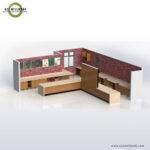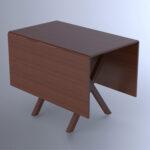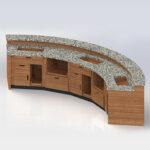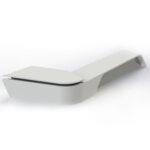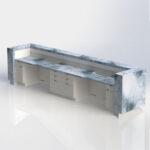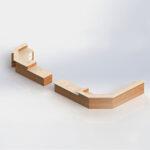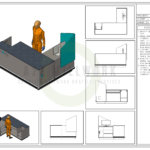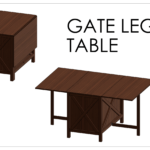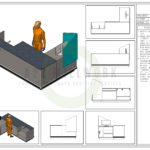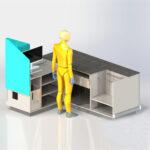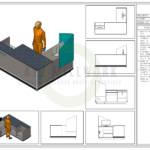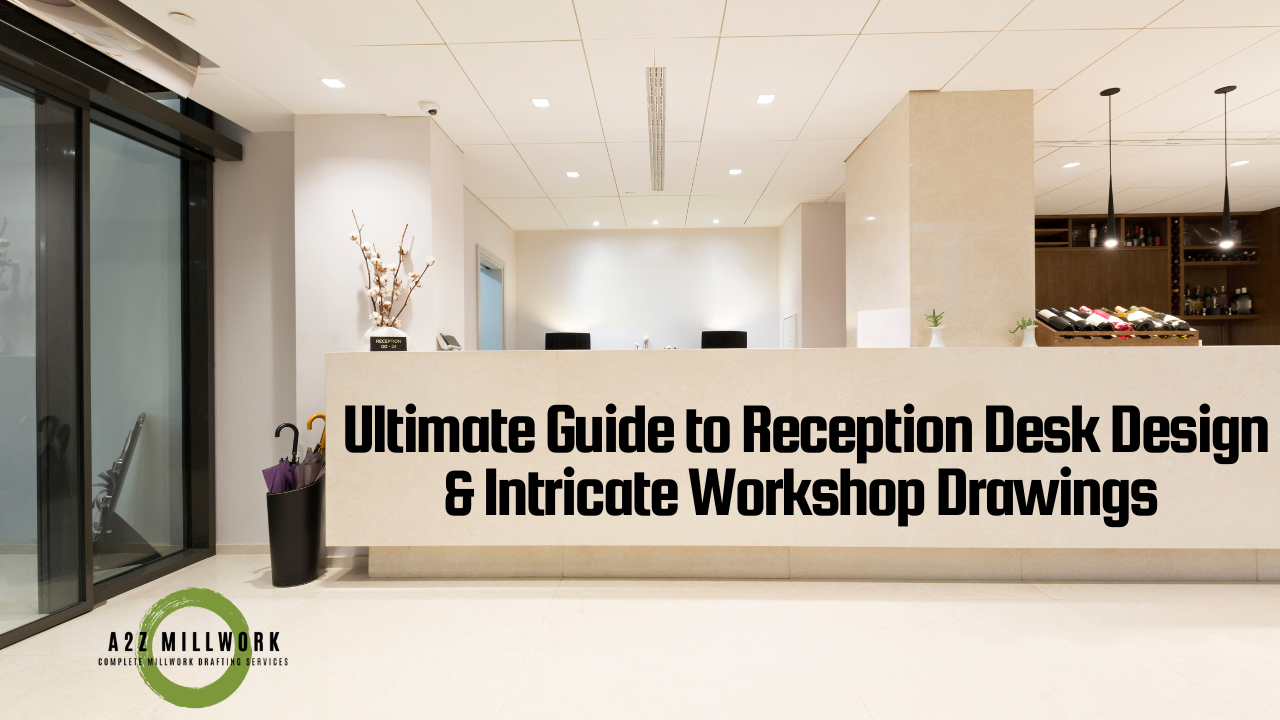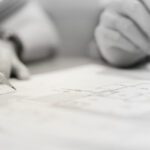Introduction
In the world of architectural design and millwork, reception desks and intricate workshop drawings hold significant importance. These elements are not only functional but also serve as a focal point in any office space. The right reception desk can set the tone for a company’s brand, while detailed workshop drawings ensure precision in the construction and assembly of millwork components. This guide explores the essentials of designing reception desks and the complexities of intricate workshop drawings, emphasizing how they can transform a workspace.
The Role of Reception Desks in Modern Office Design
Reception desks are more than just functional furniture; they are a reflection of a company’s brand and ethos. They greet visitors, provide a workspace for receptionists, and can be a focal point in the office design. Understanding the key elements that make a reception desk stand out can help in crafting a memorable first impression.
- Design Aesthetics: The reception desk should align with the overall design theme of the office. From sleek modern styles to traditional wood finishes, the design should complement the office’s interior.
- Functionality: Beyond aesthetics, the desk must be practical. It should offer adequate workspace, storage solutions, and ergonomic considerations for the receptionist.
- Material Choices: The choice of materials can impact the desk’s durability and appearance. Options include wood, metal, glass, and composite materials, each offering unique benefits.
Key Elements of Effective Reception Desk Design
A well-designed reception desk should integrate various elements to ensure it meets both functional and aesthetic requirements. Here are some key aspects to consider:
- Size and Layout: The desk should be appropriately sized to fit the space without overcrowding. Consider the layout of the office and the flow of traffic.
- Ergonomics: The desk should be designed to support ergonomic practices, ensuring comfort for the receptionist during long hours of work.
- Brand Integration: Incorporate branding elements, such as company logos or color schemes, to reinforce the company’s identity.
Introduction to Intricate Workshop Drawings
Workshop drawings are detailed plans used to guide the construction and assembly of millwork projects. These drawings are crucial for ensuring accuracy and consistency in the final product. Intricate workshop drawings include various components:
- Detailed Schematics: Provide comprehensive diagrams that outline every aspect of the project, from dimensions to assembly instructions.
- Material Specifications: Include information on materials, finishes, and hardware to be used in the project.
- Assembly Instructions: Offer step-by-step guidance for assembling the components, ensuring that the final product matches the design intent.
The Importance of Precision in Workshop Drawings
Precision is paramount in workshop drawings. Accurate drawings help prevent costly mistakes and ensure that the final product meets the design specifications. Here’s why precision matters:
- Consistency: Ensures that each component is manufactured and assembled according to the design.
- Efficiency: Reduces the need for revisions and rework, saving time and resources.
- Quality Control: Helps in maintaining high standards of quality throughout the construction process.
Integrating Technology in Design and Drawings
Advancements in technology have revolutionized the way reception desks and workshop drawings are designed. Here are some technologies that are shaping the industry:
- 3D Modeling: Allows for visualization of the design in a virtual environment, enabling better assessment of aesthetics and functionality.
- CAD Software: Tools like AutoCAD and Microvellum provide precise drafting capabilities and facilitate the creation of detailed workshop drawings.
- Virtual Reality (VR): Offers immersive experiences to explore and evaluate designs before implementation.
Best Practices for Designing Reception Desks and Creating Workshop Drawings
To achieve exceptional results, follow these best practices:
- Collaborate with Stakeholders: Work closely with clients, architects, and other stakeholders to ensure that all requirements are met.
- Prioritize Functionality and Aesthetics: Balance design and practicality to create a reception desk that is both visually appealing and functional.
- Utilize Advanced Software: Leverage modern software tools to enhance the accuracy and efficiency of your drawings.
Case Studies: Successful Reception Desk Designs and Workshop Drawings
Examining successful projects can provide valuable insights into effective design and drawing practices. Consider case studies where innovative reception desk designs and meticulous workshop drawings have led to impressive results.
A2Z Millwork LLC: Revolutionizing Reception Desk Design and Workshop Drawings
A2Z Millwork LLC stands at the forefront of millwork design, offering exceptional services in reception desk design and intricate workshop drawings. Their expertise blends artistic vision with technical precision, resulting in stunning, functional designs.
- Reception Desk Design: A2Z Millwork excels in creating reception desks that are both visually striking and highly functional. Their designs integrate seamlessly with the overall office aesthetic while meeting practical needs.
- Workshop Drawings: Their workshop drawings are renowned for their detail and accuracy, ensuring that every project is executed to perfection.
Conclusion
A2Z Millwork’s offerings in reception desk & intricate workshop drawings stand as a testament to the blend of artistic vision and technical precision. Through a synergy of creativity and technology, A2Z elevates the design concept, transcending boundaries and redefining possibilities. The future of design is here, and A2Z is leading the way. Experience the revolution in precision, experience A2Z Millwork.
This comprehensive guide aims to provide valuable insights into reception desk design and workshop drawings, showcasing how A2Z Millwork LLC leads the industry with their innovative approach. Whether you’re embarking on a new project or seeking inspiration, understanding these elements will enhance your design process and achieve outstanding results.


